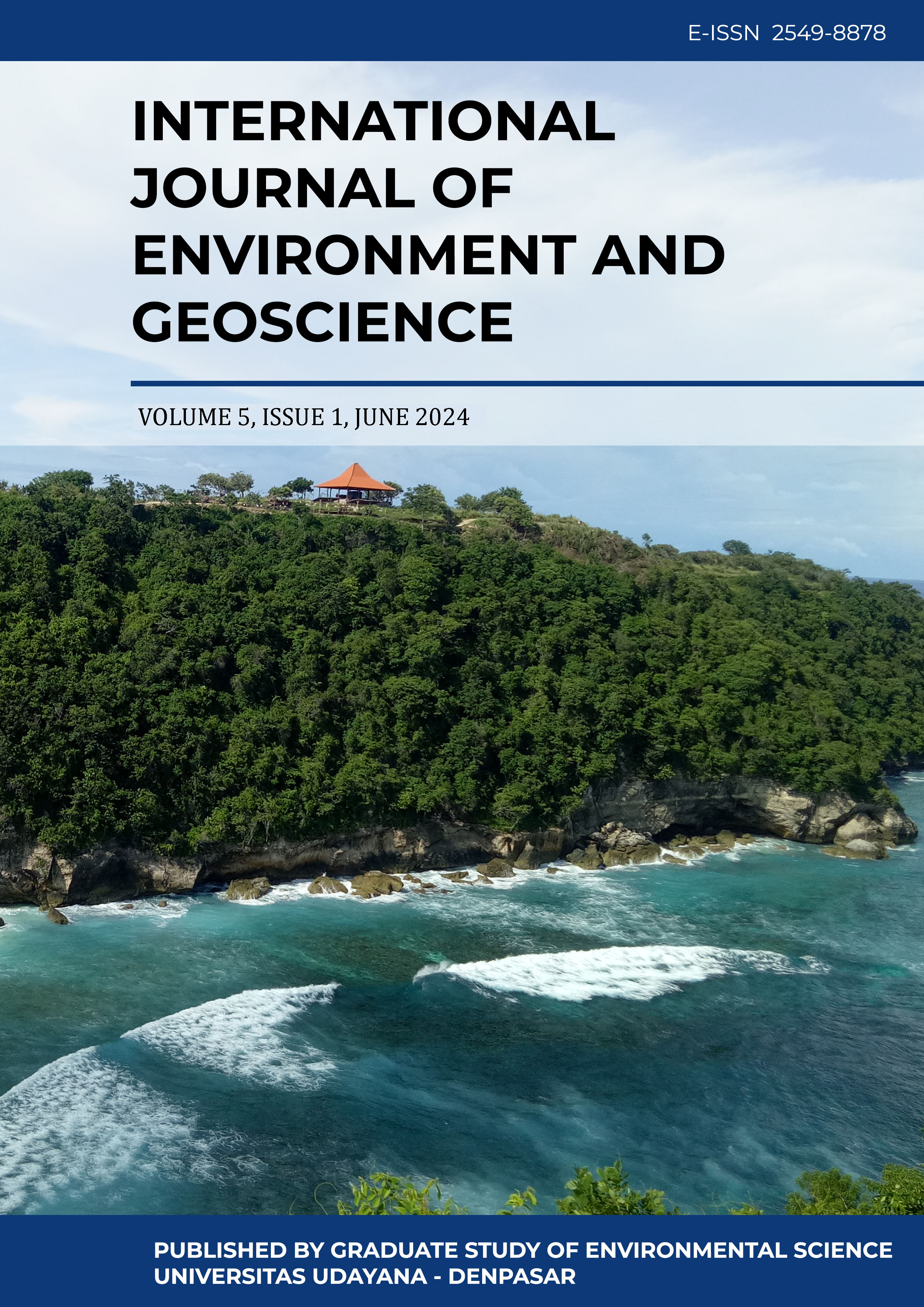Monitoring Total Suspended Solid Distribution In Coastal Bali Area Using MODIS Satellite Data
Abstract
Total Suspended Solid (TSS) is one important parameter for water quality. This research aims to analyze MODIS feasibility for identifying TSS, to identify TSS monthly patterns and annual patterns variability, and to analyze the TSS distribution patterns around Bali coastal area. Observation data of the wet season was observed in Benoa Bay on 2nd October 2013 and the dry season was observed in Perancak from July on 28th to July 31st, 2009. The comparison between observation data and satellite data was used to establish a new modification algorithm for suitable conditions around Bali coastal area. Based on research analysis, the feasibility of MODIS was different in each season. In the wet season, the coefficient correlation was (r) = 0.55 and in the dry season, it was (r) = 0.68. poor correlation in the wet season indicated the bottom effect of the area which has a shallow and heterogeneous depth. The TSS average in the wet season was 75.55 mg/l and 55.97 mg/l in the dry season. The highest value was analyzed in November (82.74 mg/l) and the lowest value in June (46.41 mg/l). During wet season, the stream volume and the stream flow rate increase and bring the TSS into coastal areas through the runoff process. The mapping patterns showed that the southern coastal area and western coastal area of Bali had a high value every month. The northern coastal had a high value only in the wet season. The characteristic of Bali river area, which is perennial and intermittent rivers caused this phenomenon. The population and Bali land-use area also affected the high TSS in these areas. Yearly patterns of TSS from 2009 to 2013 around Bali coastal areas were different every year. The highest TSS distribution observed in 2013 wet season is 87.75 mg/l. The lowest TSS distribution occurred in 2009 dry season with a value of 52.2 mg/l. The TSS tends to increase every year due to the changing in Bali land use. TSS patterns from 2009 to 2013 were dynamic every year. The El Nina and La Nino events also gave impact on the patterns. The MODIS feasibility in different locations was different depending on the characteristic of the physical property of water. The shallow and small area causes misinterpretation of the satellite reflectance. The TSS monthly patterns depended on the season and the mapping can be used to describe the sources of TSS pollution, the distribution, and the quantity of TSS in the coastal area.
Downloads
Authors who publish with this journal agree to the following terms:
- All articles published by International Journal of Environment and Geosciences (IJEG) and Graduate Study of Environmental Sciences, Udayana University are made available under an open access license worldwide immediately. This means everyone has free and unlimited access to the full-text of all articles published in International Journal of Environment and Geosciences (IJEG), and everyone is free to re-use the published material given proper accreditation/citation of the original publication. Open access publication is supported by authors' institutes or research funding agency by payment of a comparatively article processing charge for accepted articles (See Author Fees). International Journal of Environment and Geosciences (IJEG) and Graduate Study of Environmental Sciences, Udayana University publish articles under the Creative Commons Attribution License.
- Authors are able to enter into separate, additional contractual arrangements for the non-exclusive distribution of the journal's published version of the work (e.g., post it to an institutional repository or publish it in a book), with an acknowledgement of its initial publication in this journal.
- Authors are permitted and encouraged to post their work online (e.g., in institutional repositories or on their website) prior to and during the submission process, as it can lead to productive exchanges, as well as earlier and greater citation of published work (See The Effect of Open Access).





